Houttuynia cordata
Houttuynia cordata
1. The products in our compound library are selected from thousands of unique natural products; 2. It has the characteristics of diverse structure, diverse sources and wide coverage of activities; 3. Provide information on the activity of products from major journals, patents and research reports around the world, providing theoretical direction and research basis for further research and screening; 4. Free combination according to the type, source, target and disease of natural product; 5. The compound powder is placed in a covered tube and then discharged into a 10 x 10 cryostat; 6. Transport in ice pack or dry ice pack. Please store it at -20 °C as soon as possible after receiving the product, and use it as soon as possible after opening.

Natural products/compounds from Houttuynia cordata
- Cat.No. Product Name CAS Number COA
-
BCN2787
Calceolarioside B105471-98-5
Instructions

-
BCN8461
2-Undecanone112-12-9
Instructions
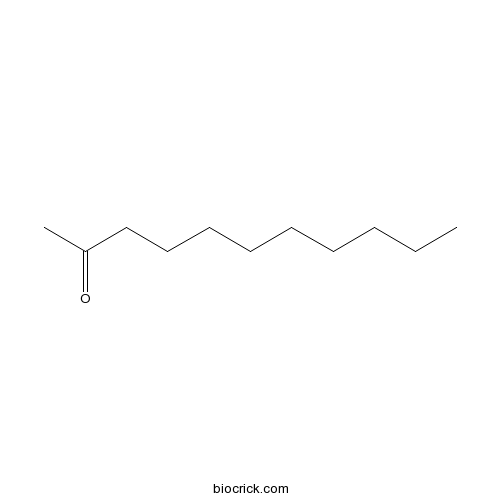
-
BCN9049
Hydroquinone123-31-9
Instructions

-
BCN9084
(-)-Sesamin13079-95-3
Instructions

-
BCN8614
Plantainoside D147331-98-4
Instructions

-
BCN2978
Sodium houttuyfonate1847-58-1
Instructions
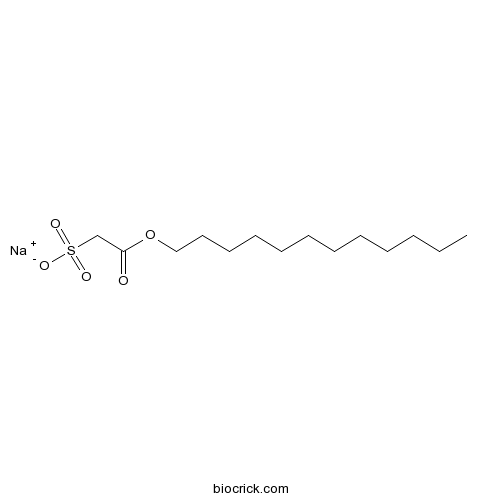
-
BCN5906
Chlorogenic acid327-97-9
Instructions
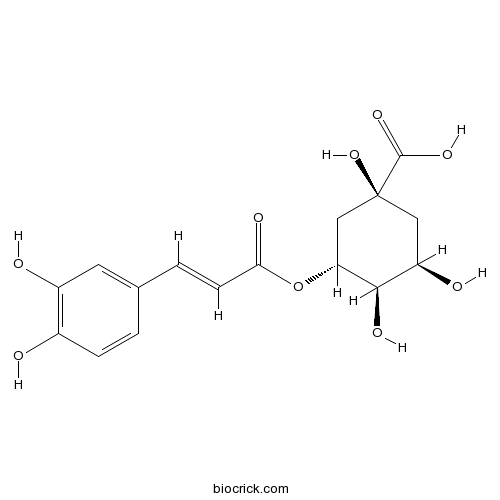
-
BCN9058
N-Phenethylbenzamide3278-14-6
Instructions

-
BCN5531
Daucosterol474-58-8
Instructions
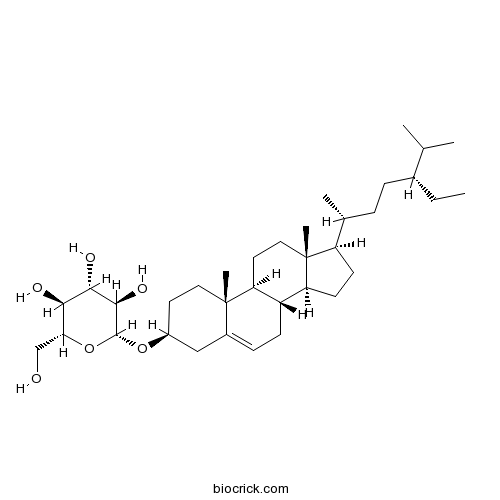
-
BCN5569
Isoquercitrin482-35-9
Instructions
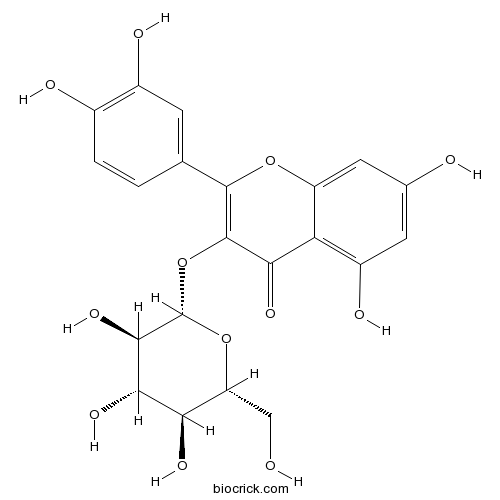
-
BCN5570
Hyperoside482-36-0
Instructions

-
BCN5573
Afzelin482-39-3
Instructions
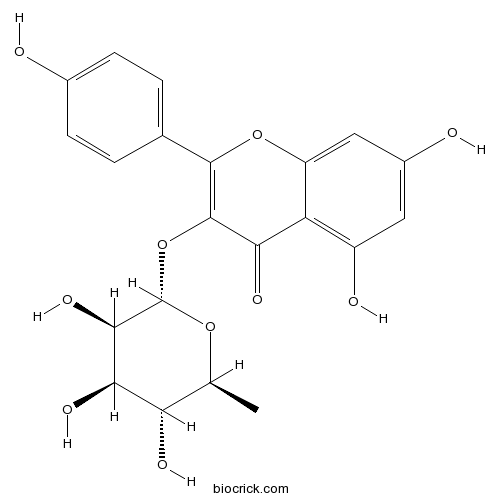
-
BCN4048
N-Nornuciferine4846-19-9
Instructions
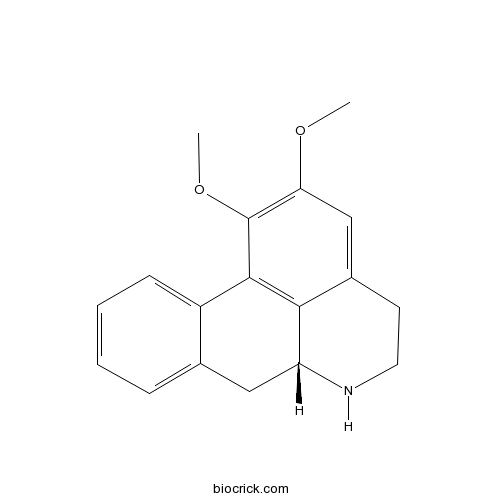
-
BCN5658
Apigenin520-36-5
Instructions

-
BCN5665
Quercitrin522-12-3
Instructions
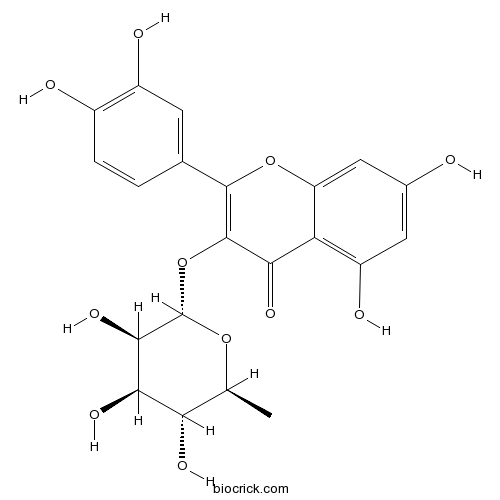
-
BCN5380
Scutellarein529-53-3
Instructions

-
BCN4136
Acteoside61276-17-3
Instructions

-
BCN1195
Forsythoside A79916-77-1
Instructions
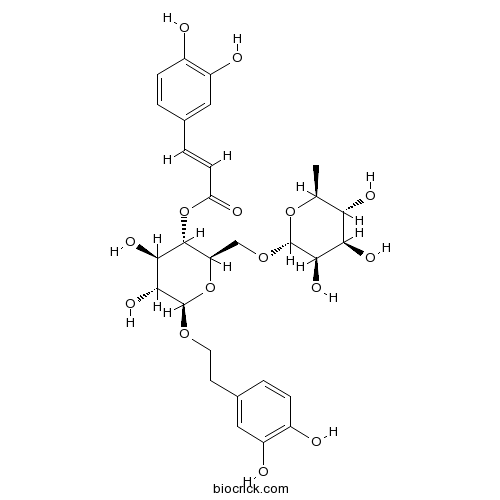
Structural characterization and anti-A549 lung cancer cells bioactivity of a polysaccharide from Houttuynia cordata.[Pubmed: 30114425]
A water-soluble pectic polysaccharide HCA4S1 was isolated from Houttuynia cordata and purified by DEAE Cellulose and Sephacryl S-300 column. HCA4S1 with an average molecular weight of 21.7 kDa mainly consisted of rhamnose, galacturonic acid, galactose, and arabinose. By using partial acid hydrolysis, methylation analysis, and NMR spectra, the structure of this polysaccharide is found to have a backbone consisting of 1,4-linked α‑d‑GalA and 1,2,4-linked α‑l‑Rha. The latter was substituted at C-4 position by 1,4 linked, 1,6-linked β‑Galp, or Teminal linked β‑Gal. Bioactivity test showed that this polysaccharide might inhibit the proliferation of A549 lung cancer cell by inducing cell cycle arrest and apoptosis. The expression of cleaved caspase 3 and cyclinB1 was observed to be upregulated after the treatment with this polysaccharide. Collectively, these results suggest that the pectin HCA4S1 from Houttuynia cordata is of potential value in the treatment of lung cancer, though the underlying mechanisms remain to be further confirmed.
Lactic acid bacteria-fermented product of green tea and Houttuynia cordata leaves exerts anti-adipogenic and anti-obesity effects.[Pubmed: 29976415]
Obesity is associated with higher risks of developing diabetes and cardiovascular disease. Green tea, rich in polyphenolic compounds such as epigallocatechin gallate (EGCG) and epigallocatechin (EGC), has been shown to display anti-obesity effects. Houttuynia cordata leaves have also been shown to exhibit anti-obesity effects due to their chlorogenic acid content. Lactic acid bacteria are able to increase the production of polyphenolic compounds. This study aims to develop a novel anti-obesity fermentation product by combining H. cordata leaf tea with green tea, using Lactobacillus paracasei subsp. paracasei NTU 101 (NTU 101) for fermentation due to the advantages of bioconverting the polyphenolic compounds. The regulation of adipogenesis factors and the anti-obesity effect of the NTU 101-fermented tea were evaluated in an in vitro 3T3-L1 pre-adipocyte model and an in vivo obese rat model, respectively. The results show that the NTU 101-fermented tea, which contained higher EGCG, EGC, and chlorogenic acid levels than unfermented tea, was able to inhibit the lipogenesis of mature 3T3-L1 adipocytes by the stimulation of lipolysis. Furthermore, the body weight gain, body fat pad, and feeding efficiency of obese rats, induced with a high fat diet, were decreased by the oral administration of NTU 101-fermented tea. The significant anti-obesity effect was probably due to lipolysis. However, NTU 101 bacteria cells and EGCG may also act as functional ingredients to contribute to the anti-obesity effects of NTU 101-fermented products.
Antiproliferative activities and phenolic acid content of water and ethanolic extracts of the powdered formula of Houttuynia cordata Thunb. fermented broth and Phyllanthus emblica Linn. fruit.[Pubmed: 29642867]
Houttuynia cordata Thunb. and Phyllanthus emblica Linn. are native plants with medicinal and nutritive significance in Asia. The present study was aimed at evaluating antiproliferative effects on human cancer cell lines and identifying the phenolic acid composition of water and ethanolic extracts of the powdered formula of H. cordata fermented broth and P. emblica fruit.
Therapeutic potentials of Houttuynia cordata Thunb. against inflammation and oxidative stress: A review.[Pubmed: 29605674]
Houttuynia cordata Thunb. (Family: Saururaceae) is an herbaceous perennial plant that grows in moist and shady places. The plant is well known among the people of diverse cultures across Japan, Korea, China and North-East India for its medicinal properties. Traditionally the plant is used for its various beneficial properties against inflammation, pneumonia, severe acute respiratory syndrome, muscular sprain, stomach ulcer etc. Oxidative stress and inflammation were found to be linked with most of the diseases in recent times. Many ancient texts from Chinese Traditional Medicine, Ayurveda and Siddha, and Japanese Traditional medicine have documented the efficacy of H. cordata against oxidative stress and inflammation.
Houttuynia cordata extract increased systemic exposure and liver concentrations of metformin through OCTs and MATEs in rats.[Pubmed: 29480578]
The synergistic activity of Houttuynia cordata ethanol extract (HCT) and metformin combination in diabetic rats has been previously reported, but the fundamental causes remain unsolved. Organic cation transporters (OCTs) and multidrug and toxin extrusion proteins (MATEs) transport metformin to the liver and kidneys. Therefore, pharmacological activity and systemic exposure of metformin in HCT-metformin combination were determined from pharmacokinetic change and glucose-lowering activity using in vitro HEK-293 cells expressing human OCTs or human MATEs and in vivo rats. HCT inhibited human OCT2 and human MATE1-mediated metformin transports in vitro. In in vivo rats, treatment with HCT and metformin for 28 days in rats (28MH rats) reduced the rat Oct2-mediated renal excretion of metformin and thereby the increased systemic exposure of metformin compared with only metformin-treated rats for 28 days (28M rats). In 28MH rats, rat Oct1-mediated metformin uptake into the liver was enhanced, leading to an improved glucose-lowering effect without hypoglycaemia compared with 28M rats. There was no impairment of renal function in HCT and metformin treatments. These results suggest that HCT-metformin combination therapy is applicable in terms of efficacy and safety.
Houttuynia cordata polysaccharides ameliorate pneumonia severity and intestinal injury in mice with influenza virus infection.[Pubmed: 29471085]
Hottuynia cordata is an important traditional Chinese medicine for the treatment of respiratory diseases including bacterial and viral infections. Polysaccharides isolated from Houttuynia cordata (HCP), as its main ingredients, have been demonstrated to ameliorate the LPS-induced acute lung injury in mice. The study aimed to determine the protective effects of HCP on multiple organ injury in influenza A virus (IAV) H1N1 infected mice and its primary mechanisms in anti-inflammation and immune regulation.
A Blend of Extracts from Houttuynia cordata, Nelumbo nucifera, and Camellia sinensis Protects Against Ethanol-Induced Liver Damage in C57BL/6 Mice.[Pubmed: 29356593]
The protective activity of a mixture of aqueous and ethanolic extracts from Houttuynia cordata Thunb, Nelumbo nucifera G. leaves, and Camellia sinensis seed (HNC) was evaluated in C57BL/6 mice. Pretreatment with HNC prevented the elevation of serum aspartate aminotransferase and alanine aminotransferase caused by ethanol-induced hepatic damage. The HNC-treated mice showed significantly lower triglyceride levels, reduced CYP2E1 activity, and increased antioxidant enzyme activities and lipogenic mRNA levels. These results suggest that HNC might be a candidate agent for liver protection against ethanol-induced oxidative damage, through enhancement of antioxidant and antilipogenic activity.


